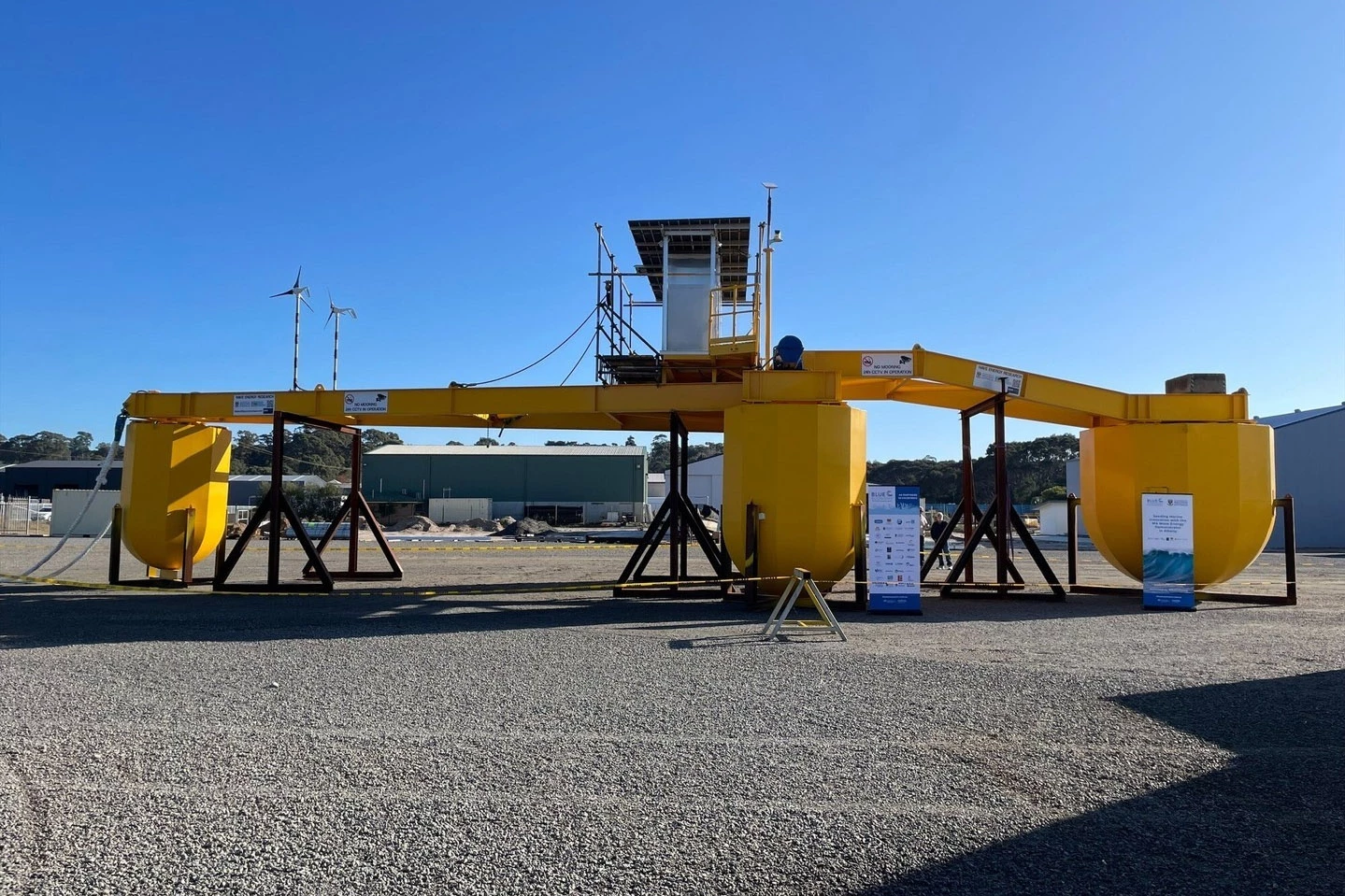If you find yourself in the Australian port city of Albany and spot a humongous yellow machine bobbing in the waves of King George Sound, don't be alarmed. It's just a generator prototype making a case for renewable wave energy.
Developed by the University of Western Australia's Marine Energy Research Australia knowledge hub, the device is called the Moored MultiMode Multibody (M4) Wave Energy Demonstration Project.
Following the machine's launch ceremony last week, the plan is to operate it for six months (starting later this month) and gather data on how efficiently it generates energy. An even larger model will subsequently be built and deployed on the high seas.

The M4 demonstrator spans a massive 79 feet (24 m) in length and is nearly 33 feet (10 m) wide – approximating the length of an average wave within King George Sound. It consists of a hinged steel frame supported by four buoys. That frame's hinging action generates power with every undulation of the surrounding water.
What's especially intriguing is how the M4 will resemble a dancing spider on the water. Here's a scaled down prototype in a test pool, to give you an idea of what that'll look like.
There's more to the M4's hypnotic motion than meets the eye. Thanks to its hinged design, the frame's angular rotation under the waves generates power with every undulation of the surrounding water.
The M4 peaks at 10 kW, which is not a lot given its size. By comparison, the significantly more compact Waveswing prototype developed by Scotland's AWS Energy peaks at 80 kW.
Still, there's plenty for researchers to learn from testing the M4. It remains to be seen how the system weathers the challenges that come with submerging machinery, including corrosion, biofouling caused by algae and barnacles, and damage due to debris carried by ocean waves.
Sources: University of Western Australia, Blue Economy




